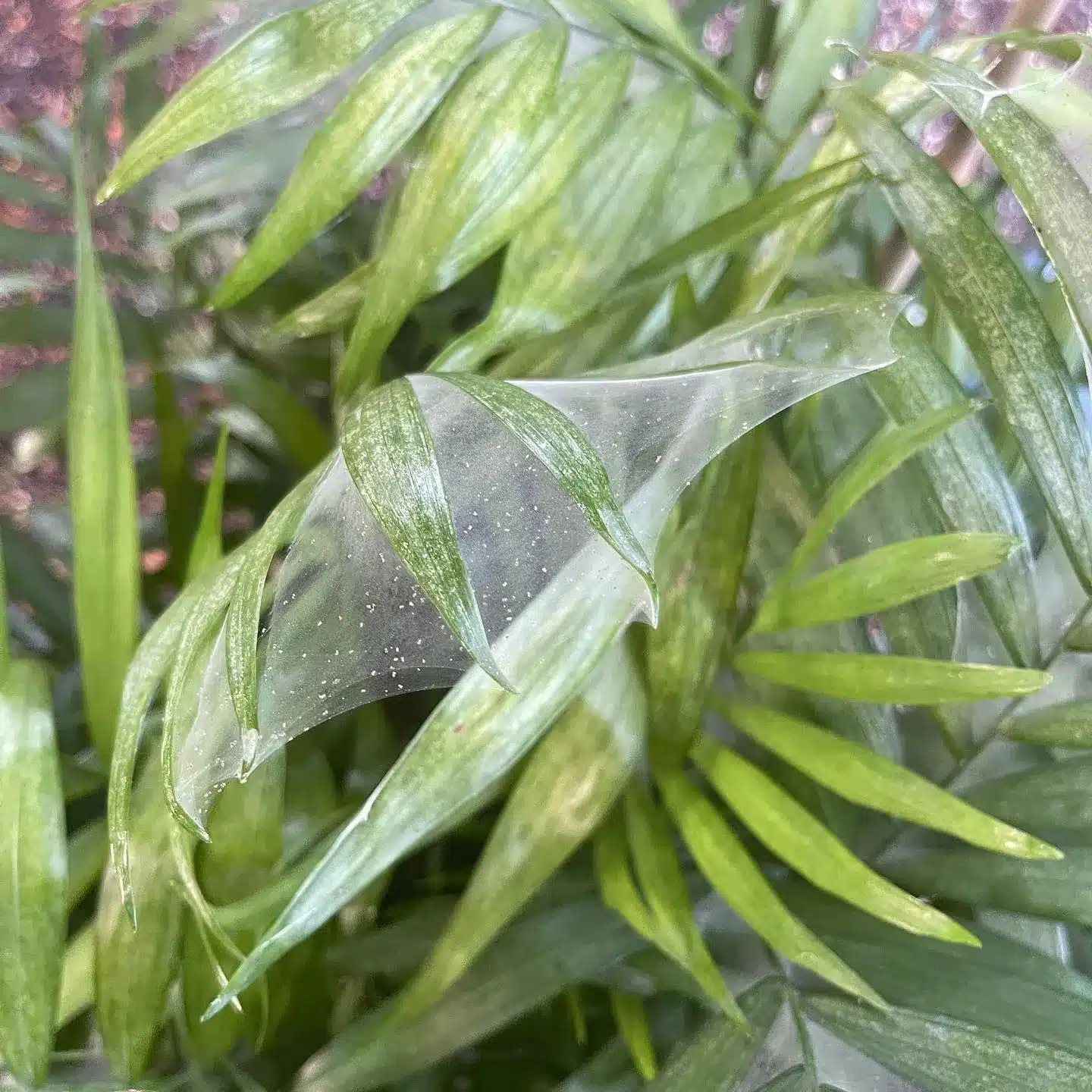Do you know a female Spider Mite lays about 60 eggs, and 90% hatch into female mites, making their spread exponential in plants?
Among Spider Mites, two-spotted Spider Mites are the most common type responsible for invading and destroying various crops.
So, read this entire article to learn about the appearance, facts, and best ways to eliminate Spider Mite eggs.
Table of Contents Show
How Do You Identify Spider Mite Eggs?
With the naked eye, Spider Mites appear like tiny black moving dots that are difficult to identify.
Likewise, their eggs are too tiny, with each size of 0.14mm, making them unnoticeable without any magnifying device.
Remember, Spider mites usually lay 10-20 eggs in a group underside of the leaves with their protective white webs.
But they may also lay their eggs in the fallen leaves, debris, and weeds in the fall and stay dormant till early spring.

Due to the eggs eye-challenging tiny size, you may need a magnifying glass or a microscope to see them properly.
Moreover, the eggs are translucent initially that turn white or cream-colored over time with maturity.
So, thoroughly inspecting cream-colored white clumps on the underside of leaves, stems, and flowers are the best way to identify Spider Mites eggs.
How Long Can Spider Mite Eggs Stay Dormant?
A female Spider Mite can lay about 3-6 eggs per day, and in an average of 68 days, it can lay up to 100 eggs.
However, when the temperature rises above 70°F, they may hatch earlier, i.e., between 3 and 7 days.
That said, the eggs can not survive hot temperatures above 135°F and cold temperatures dipping below freezing.
Thus, Spider Mite lays eggs mainly in the early spring when the temperature is neither too hot nor too cold.
Nevertheless, some cool-season Spider Mites, like Spruce Spider Mites, produce dormant eggs that survive freezing temperatures.
If the environmental condition is not favorable for hatching, Spider Mites eggs remain dormant for a few days to several weeks.
Therefore, aiming for unfavorable hatching conditions is ideal for inhibiting exponential egg hatching.
How To Get Rid Of Spider Mite Eggs?
Spider Mites lay their eggs in the area with very low air circulation, so increase the air circulation by pruning the bushier plants.
Also, you must use clean, sterilized pruning tools and regularly monitor the crops and houseplants to avoid webbings.
- Snip off the Spider Mite-infested parts using sharp shears and safely dispose of them.
- Isolate the affected plant and use water spray to dislodge eggs from the plant.
- Use neem oil, onion or garlic water, and insecticidal soap to kill Spider Mites and their eggs.
- Alternatively, use chemical control like isopropyl alcohol, horticultural oil, and insecticides to kill Spider Mites eggs.
- Although slow, add or introduce natural predators like ladybugs as a guardian for your plants.
- Regularly inspect the underside of leaves and remove the webbing immediately before it is too late.
- Clear the weeds, debris, and leaves during the fall to prevent them from laying eggs.
- Timely clean plant leaves using soapy water to discourage insect eggs on leaves.
From Editorial Team
Get Rid Of Spider Mites Eggs Naturally
Instead of applying chemicals over your plants, you can easily prevent them from these nasty mites using their natural enemies.
These natural enemies, including ladybugs, predatory thrips, pirate bugs, etc., feed upon Spider Mites, preventing them from laying eggs.


